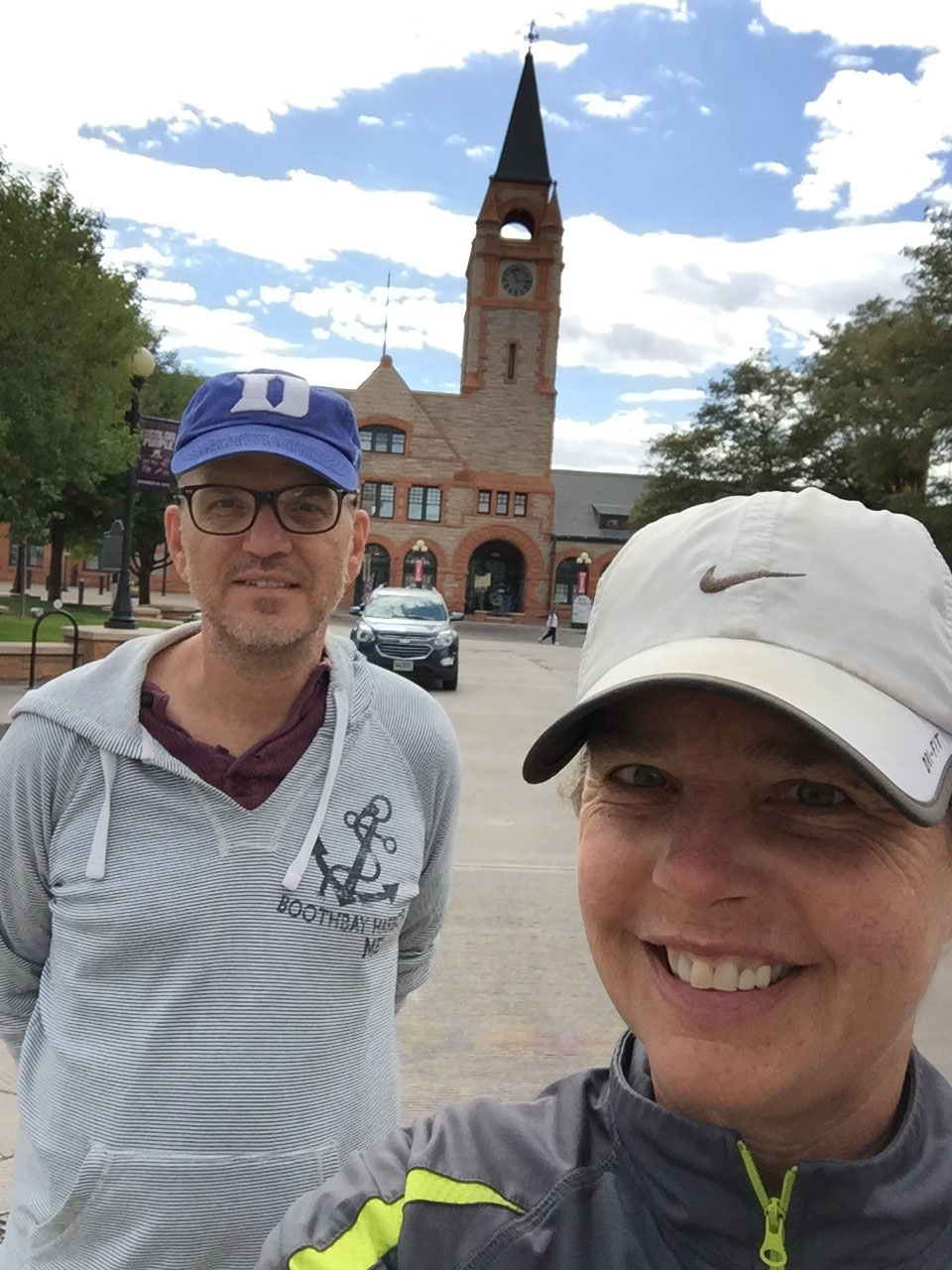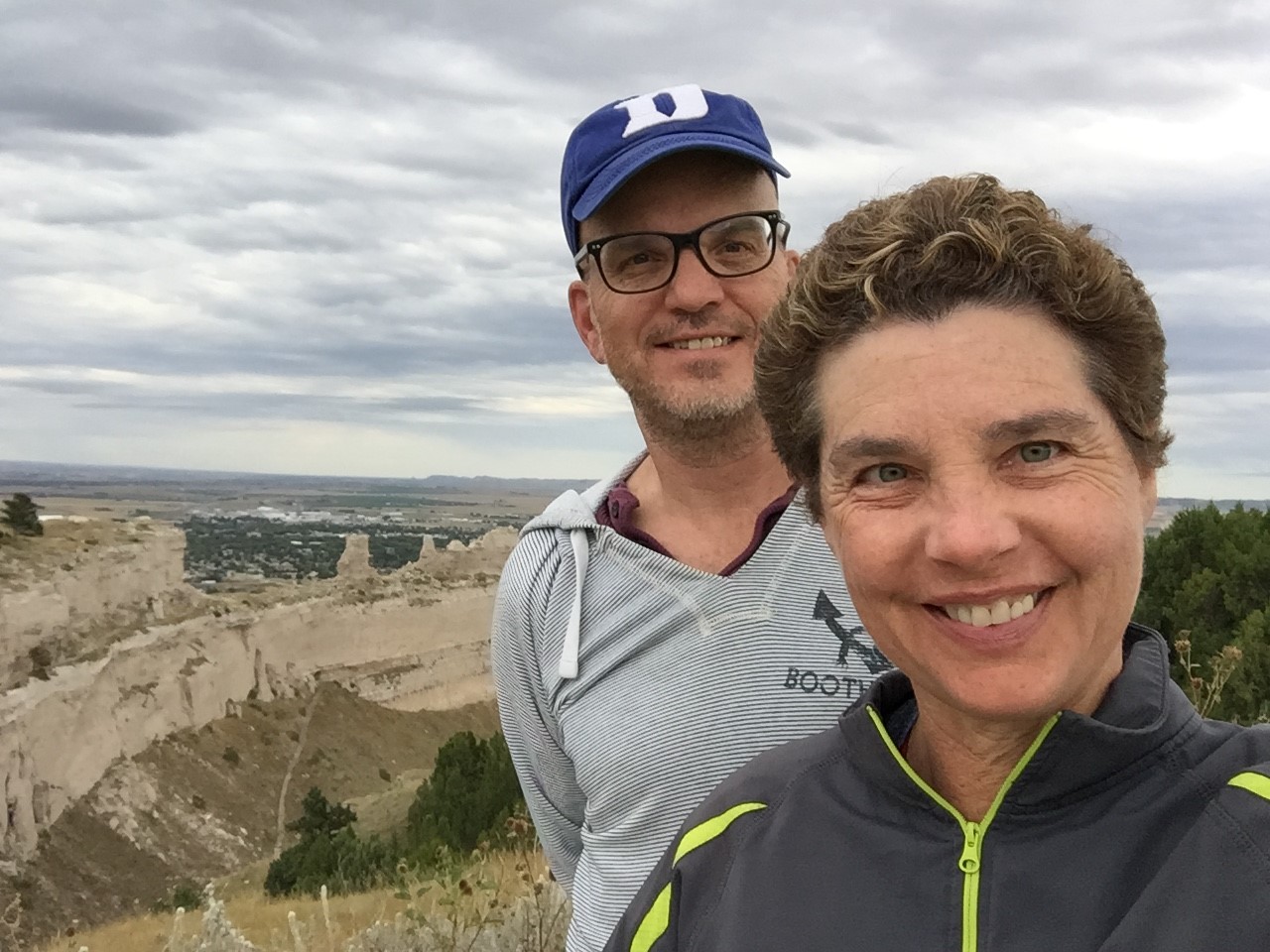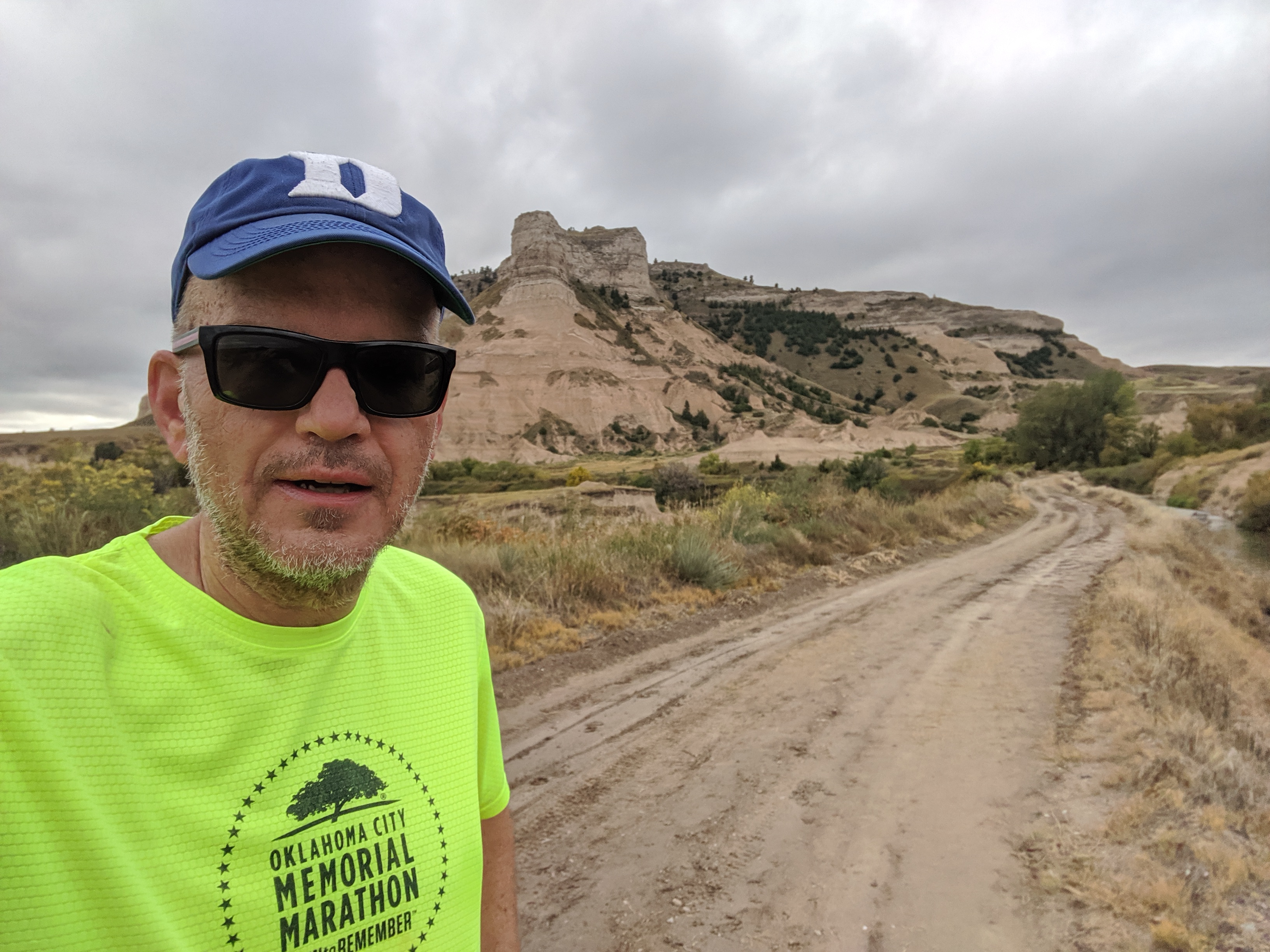
Number 42 was the Monument Marathon in Scottsbluff, Nebraska on 28 September 2019. I finished in 4:18:51, 24th of 67 finishers, 18th among 34 men, 4th of 7 men aged 50-59. I had hoped to improve substantially on 41 and I did somewhat better, but I was pretty disappointed in the result. My weight is down 5 lbs. or so the last few months and I got at least one long training run, in the form of the marathon I ran in August. Not sure if there are any fast ones left in me. Rachael finished the half in 2:59:33, number 207 of 264 finishers. She hasn't been training to run, although she is a star rower, so it's pretty cool that she did the half.
Logistics for this run were very similar to those for last February's Colorado run, we flew to Denver the day before the race and drove directly to Gering, being very bad in not visiting family and friends in the Denver area. We stopped for lunch in Cheyenne, where we walked around the downtown area and explored local history. Rachael picked up the Cheyenne Historic Distric Walking Tour Guide from the Wyoming State Museum and was able to read the history of buildings along the way, although most of the stories were of cattle baron mansions long since torn down. By far the most interesting story concerns St. Marks Episcopal Church, which was first constructed in the 1880's. A bell tower was added in 1924, but in the midst of construction the two stone masons hired for the project suddenly disappeared and other workers had to be found to complete the project. The Church received a letter in 1976 from a Swedish mason living in South America stating that his co-worker fell to his death while working on the project. Afraid that he would be blamed for the death, the mason sealed his partner in the stone work and fled. According to the guide book, the church still has the letter. Here is a picture of Rachael and I in front of the Wyoming State Capital

We had lunch in the brewery of the Accomplice Beer Company, which is in the Cheyenne train depot. Cheyenne was a major center for the Union Pacific railroad, which was completed in 1869. After the railroad came, emigrants no longer had to walk across the plains. There is a beautiful map of the railroad inlaid in the floor of the depot. Here we are standing outside.

After lunch we drove to Gering, Nebraska and picked up our race packets from the Gering Civic Center. At the center we talked to an charismatic national park ranger, who let us know that we could drive to the top of Scott's Bluff. Scott's Bluff is named for Hiram Scott, who participated in fur trading expeditions that reached the Salt Lake valley in the 1820's. He died near the base of the bluff in 1828. We drove to the top to look around. The bluff was a landmark on emigrant trails west and was made in to a National Monument in 1919. To improve tourism, a road was constructed to the top, which road we were told includes the only road tunnels in the state of Nebraska. From the top one can see another major trail landmark, Chimney Rock in the far distance. Here is a picture of us on top looking down on Scottsbluff (the town).

The little nub in the far distance in the center is Chimney Rock.
Despite the assertion on wikipedia that the Scottsbluff metro is the 7th largest in Nebraska, the Scottsbluff micropolitan area only has 38K residents. Still, downtown Scottsbluff supports the lovely Midwest Theater, built in 1946 and name a national historic site in 1997. The midwest is a big place. The Midwest Theater was kind enough to show the movie Brittany runs a marathon on marathon weekend. Rachael and I went to the 7:30 show, it's a fantastic summary of the process we all go through to get control of our lives. There weren't too many out to see it, but it was wonderful. The movie was just one aspect of how the whole town comes together to support the races, which benefit the scholarship fund at Western Nebraska Community College. Many roads are closed for a long time, since the course stays open for over 8 hours. The county sheriff himself came to see us off at the start of the race.
The marathon course is point to point, I road a bus from the finish area to the start at Wildcat Hills State Recreation area. As indicated in this elevation chart,

the course drops 200 feet in the first mile and nearly 800 feet in the first 9 miles. I ran the first mile in 8:06! And it felt easy. If only the course had stayed like that. The first 6.5 miles are in the right lane of a 4 lane divided highway. After that the course wanders the valley before heading into Mitchell Pass at the halfway point. I got to the midpoint at about 1:55, but was pretty down on my odds of getting below 4 hours because I knew the second half of the course was more challenging. Apparently Mitchell pass was known by the emigrants as "Devil's Gap" because of the howling winds. These were fine climbing up through the pass, as they were at my back. Here is a video of the course
In contrast with the video, it was cloudy and drizzly on race day, with a comfortable running temperature of 50 degrees. But the wind was howling from the east. After my glorious start, my mean pace faded constantly through the race but was still around 8:50 at the half. Going through the Devil's gap my pace was around 9:15, so things were not looking too bad. At mile 18, however, the course turned back into the wind and went along muddy tracks along the North side of Scott's bluff. The wind was disheartening, my pace dropped to 10 and 11 minute splits through this section. The mud paths are the most spectacular part of the course, however, here is a selfie I took on the course as it rounds the bluff heading back to town

I slogged it out just a bit faster once we got back to pavement for the last three miles. Just as I have been fading in the last half of marathons, I am fading a bit in the last half of this 50 state project. But it seems likely that I will get it done
This was the second run in a row on the Mormon trail. You can see Scottsbluff and Fort Bridger in context here:

How impossible it would have been for my ancestors along that trail to imagine that someday their decendents would cover the length of their 3 month trek in just a couple hours on a plane, then drop in to run around almost naked for fun. They were out pushing wooden handcarts through the muck! Today at least we would get carbon fiber handcarts with microlight tents. We have come a long way in the past 150 years, I hope that we find the strength to improve as much in the next 150. Here's a picture Rachael took of me crossing the finish, with a couple of very patient half marathon runners finishing at the same time

and here we are together with our finisher medals and the bluff in the background
